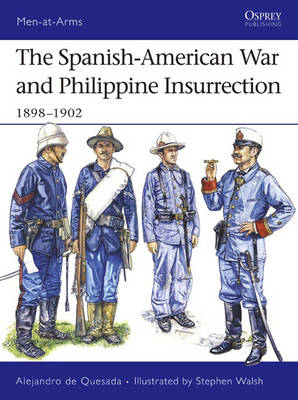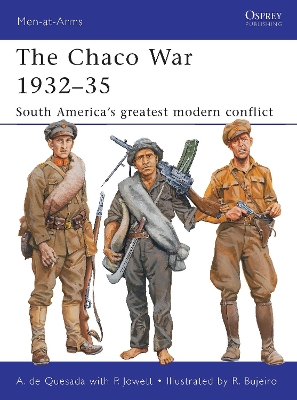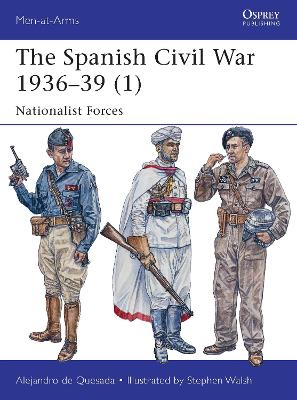Men-at-Arms
2 primary works • 5 total works
Book 437
The Spanish-American War and Philippine Insurrection
by Alejandro De Quesada
Published 8 February 2007
In 1898, US public opinion turned against the Spanish for their repression of Cuba. Relations between the two governments soured and ultimately resulted in the mysterious blowing up of the USS Maine in Havana harbour, which triggered a short but demanding war. Many famous US personalities were involved, including future President Theodore Roosevelt, future general John Pershing, and journalists William Randolph Hearst and Stephen Crane. The war against the Spanish may have been brief but as Henry Cabot Lodge declared: 'Its results were startling, and of world-wide meaning.' Victory made the US a nation with global interests. Providing a detailed examination of the experiences and equipment of the opposing sides, and featuring rare and previously unpublished photographs, this book highlights this crucial yet oft-forgotten war that changed the future of American foreign policy during 'the age of American imperialism.'
Book 474
The Chaco War was massive territorial war between Bolivia and Paraguay, which cost almost a 100,000 lives. An old fashioned territorial dispute, the contested area was the Gran Chaco Boreal, a 100,000-square mile region of swamp, jungle and pampas with isolated fortified towns. The wilderness terrain made operations difficult and costly as the war see-sawed between the two sides. Bolivian troops, under the command of a German general, Hans von Kundt, had early successes, but these stalled in the face of a massive mobilization programme by the Paraguans which saw their force increase in size ten-fold to 60,000 men. This book sheds light on a vicious territorial war that waged in the jungles and swamps of the Gran Chaco and is illustrated with rare photographs and especially commissioned artwork.
The Spanish Civil War, 1936-39, was the curtain-raiser to World War II, and the major international event of the 1930s. It was the first great clash of 20th-century ideologies, between the rebel Nationalist army led by General Franco (right-wing, and aided by Nazi Germany and Fascist Italy), and the Republican army of the government (left-wing, and aided by the Communist Soviet Union and many volunteers from liberal democracies). Three years of widespread campaigns involved the most modern weapons available. The war was fought ruthlessly by both sides, and when the Nationalists secured victory they installed a dictatorship that lasted until November 1975 - the last such regime in Western Europe. Featuring specially commissioned full-color artwork, this first part of a two-part study depicts the fighting men of the Nationalist forces that strove to take control of Spain alongside their German and Italian allies.
The Spanish Civil War was the curtainraiser to World War II and involved a complex collection of forces, particularly on the Republican side. This title illustrates how diverse the Republican forces were, drawn from loyal elements of the Spanish army that rejected the appeal of the rebel generals, a wide range of volunteer regional units and political militias, and supported by volunteers from many other countries, including Great Britain, France and Germany, in units known as the International Brigades. The wide range of equipment and uniforms worn by these troops is revealed, as is, the organization of militias into conventional brigades and divisions. Featuring specially commissioned full-colour artwork, this second part of a two-part study depicts the fighting men of the Republican forces and examples of their foreign comrades.
Imperial German Colonial and Overseas Troops 1885-1918
by Alejandro De Quesada and Chris Dale
Published 1 January 2013
Germany's 30-year colonial episode in Africa, the Pacific, and her enclave in China is a relatively unexplored aspect of the country's history. Under the young Kaiser Wilhelm II, rivalry with the old colonial powers saw the protectorates, originally established by trading companies, transformed into crown colonies garrisoned by the newly raised Schutztruppe, with support from the Imperial Navy's Seebataillone. This book explains the organization and the operations in these colonies, including an account of the Herero campaign in Southwest Africa. Illustrated with rare photos, and with color plates detailing the uniforms of German and native troops alike, this is an authoritive description of the garrisons manning the German colonies.




